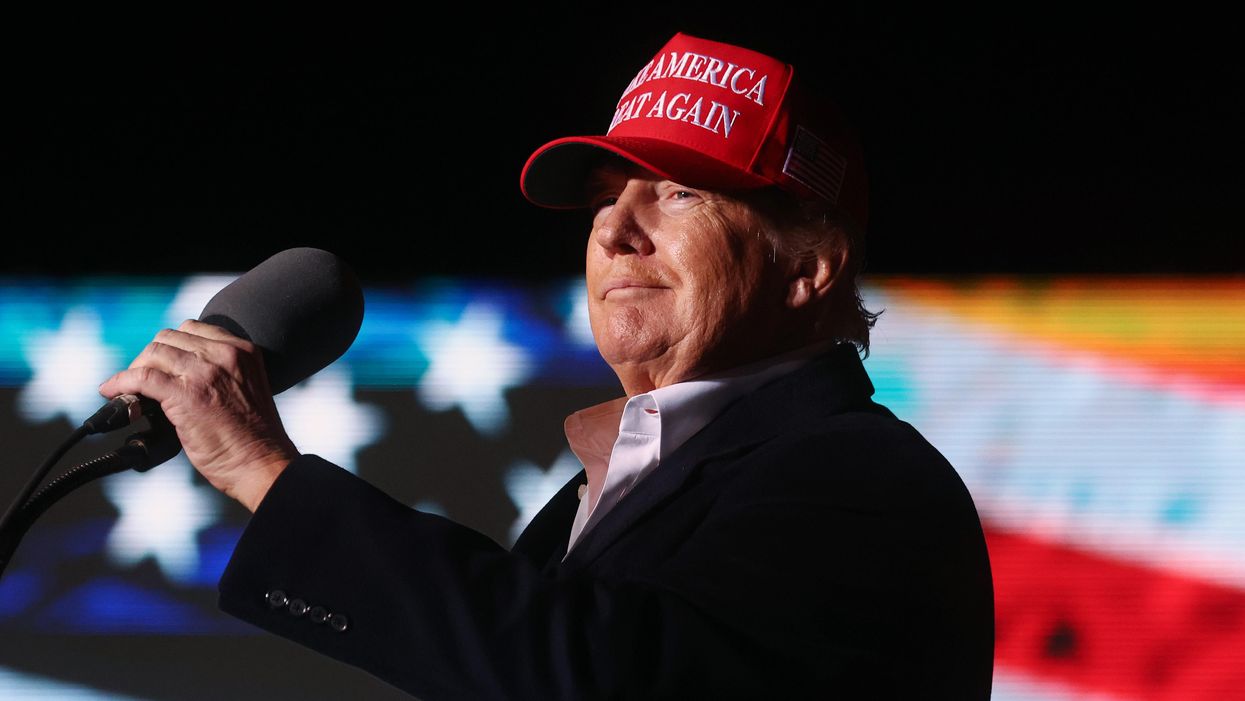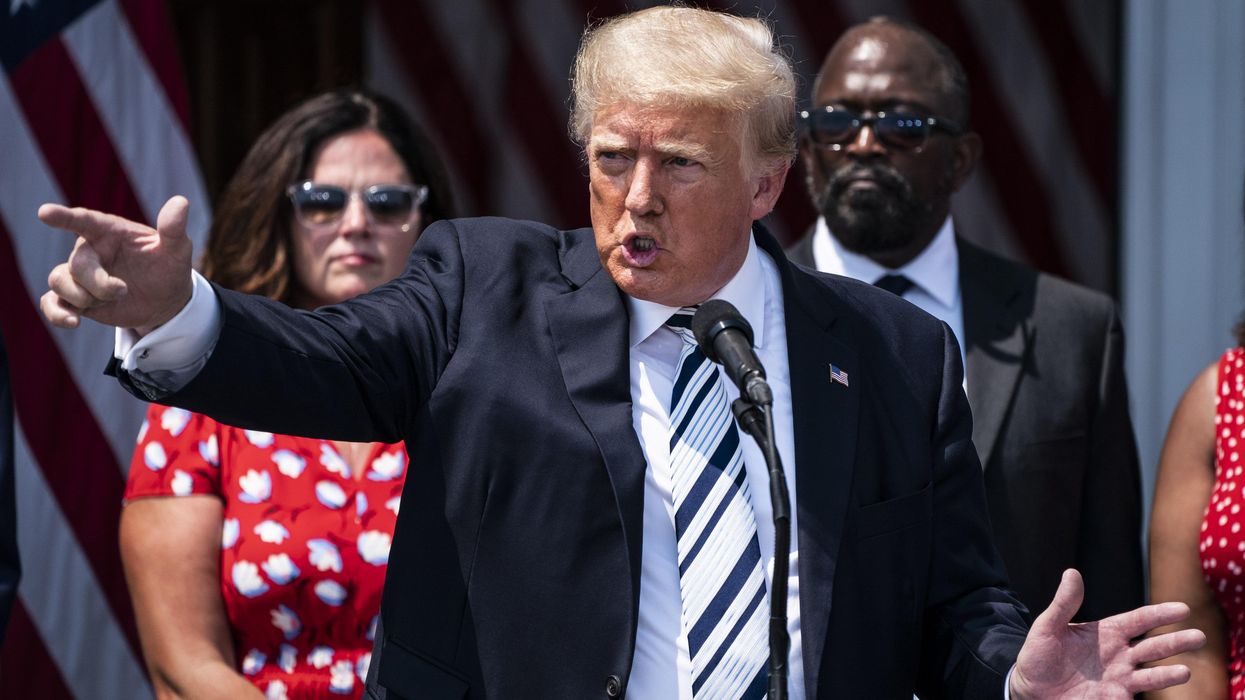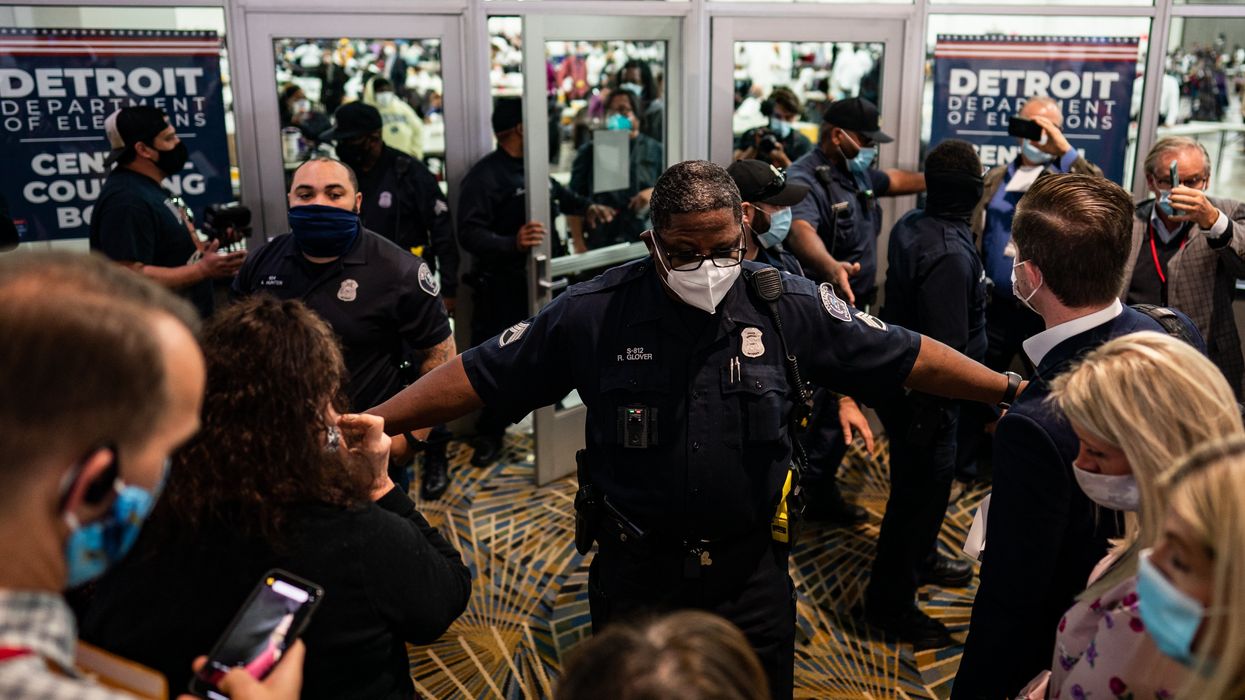While many countries claim to be democracies, none has an electoral structure quite like the one used in the United States — and our unique structure makes authoritarianism a viable and dangerous threat, according to a new report.
Protect Democracy, a nonpartisan advocacy group that fights authoritarianism, found that the use of partisan primaries, over-sized single-member congressional districts and a two-party system make the United States an outlier and susceptible to an authoritarian shift emerging from the fringes of the Republican Party.
“The U.S. electoral system is not only advantaging antidemocratic extremism but is also poorly positioned to combat it,” author Grant Tudor writes in “ Advantaging Authoritarianism: The U.S. Electoral System & Antidemocratic Extremism. “Reconfiguring electoral system design is a pathway to help protect democracy against those who would do it harm.”
The report stresses that the right-wing extremist faction represents a minority of Americans, but carries outsized weight thanks to the design of the U.S. electoral system. Tudor notes that more than 80 percent of Americans, including three-quarters of Republicans, disapprove of the Jan. 6 insurrection.
“Nonetheless, this faction is poised to experience continued successes; and the Big Lie behind the January 6th insurrection is spreading, not abating, as an increasing number of politicians propagate it,” he wrote.
The report demonstrates how the federal election system in the United States makes possible the emergence of antidemocratic extremism.
For example, the single-member plurality system, in which the candidate who receives the most votes wins the election. This generates electoral biases, “exaggering electoral wins in one party’s favor, wherein the share of seats does not correspond to the share of votes.” This system makes compromise unlikely because it does not take into account complex voter attitudes.
Partisan gerrymandering, by which a political party can design legislative districts virtually guaranteed to be won by that same party, can exacerbate this issue by limiting competition and diluting minority voices.
Over the past three years, state legislatures have made numerous changes to their election systems. And this week Democrats are once again pushing for federal standards, although that effort appears to be stuck in the Senate. Protect Democracy ties changes to elections and the violence of Jan. 6 to authoritarian efforts.
“As antidemocratic extremists continue to secure political power incommensurate with their support, elections will become increasingly prone to abuse in order to consolidate authoritarian gains. Indeed, far-right officials are already manipulating electoral regulations while in power and delegitimizing elections they lose nonetheless — including through violence if necessary,” Tudor wrote.
While acknowledging the broad menu of election reforms that have been proposed, he focuses on a handful that they believe can fend off extremism.
First, he proposed ranked-choice voting as an alternative to the current plurality system, in which the candidate with the most votes wins even without securing a majority of the ballots. In an RCV election, voters rank candidates. If one candidate is named first on a majority of first-place votes, that person wins. But if not, the person with the fewest first place voters is eliminated and those ballots are redistributed to voters’ second choice. This process continues until someone has a majority and is declared the winner.
Protect Democracy and other RCV advocates believe that system decreases the power of factions because candidates must appeal to a wider voter base in order to secure second- and third-place ballot positions.
“Particularly because candidates may require voters to list them as lower-order preferences, they become reciprocally dependent on voters beyond their most partisan constituencies. This may in turn carry implications for mitigating extremism,” states Tudor, who cited the use of RCV in Northern Ireland for pulling Sinn Fein toward more moderate positions.
The report also looked at the 2016 GOP presidential primary and theorized that an RCV primary might have resulted in a candidate other than Donald Trump. “In the 2016 Republican primaries, a majority of voters in a majority of primaries did not prefer Trump,” Tudor wrote, but the ballots did not provide a method for expressing that opinion and instead the anti-Trump vote was split among other candidates.
The report also suggests proportional, or multimember, representation in the House of Representatives. The current system, in which each district is represented by one person, ignores the voice of voters whose preferred candidates do not win. But in a proportional system, multiple winners are declared, based on the parties’ share of the vote.
“Among the most direct implications of more proportional representation is a weakening of the current ‘seat bonus’ that favors one party over the other,” the report reads. “By better bringing total seats in line with total votes, more proportional allocations would significantly lessen the institutionalized bias in legislative elections that exaggerates one party’s electoral wins.”
According to Protect Democracy’s research, such a system would result in more inter- and intraparty competition, as well as create an opportunity for additional political parties to play a significant role:
“For instance, whereas the U.S. electoral system’s strict two-party system by design precludes electorally competitive third (or fourth, or fifth) parties, multi-member districts would permit, say, a new center-right party to contest the far-right and give ‘center-right voters a meaningful home’; or, instead, may create opportunities to restore a pro-democracy Republican Party while relegating the far-right to its own minority party.”
Multimember districts could be coupled with an expansion of the House of Representatives, which would decrease the number of constituents for each lawmaker. According to the report, the United States ratio of lawmakers to constituents is six to seven times larger than other advanced democracies, and only India’s is greater.
“Representatives with larger constituencies are more likely to adopt more extremist positions disfavored by a majority of their constituents; more likely to cater to wealthier constituents; and more likely to be distrusted by constituents,” Tudor wrote. “An expanded House may not only help to minimize these effects, but would also very likely have a salutary effect on other structural issues, such as decreasing the nonproportionality of Electoral College results.”
Break
Additionally, Protect Democracy suggests replacing the standard primary election with a nonpartisan “top four” system, in which the four leading vote-getters advance to the general election regardless of party affiliation, could reduce polarization and engage more people in the process.



















